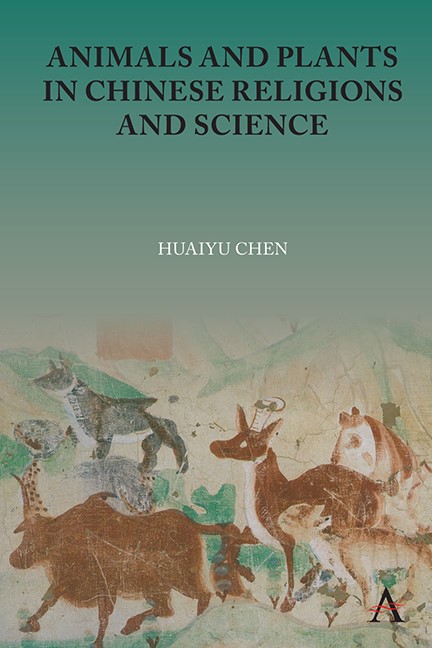Book contents
- Frontmatter
- Contents
- Acknowledgments
- List of Illustrations
- Introduction
- 1 Plant Science and Technology in Medieval China
- 2 Ordering Plants in the Buddhist World: A Medieval Botanical Taxonomy
- 3 Animal Divination and Climate: An Environmental Perspective on the Cult of the Pig
- 4 Zoomancy in Medieval China
- 5 The Changing Images of Zodiac Animals in Medieval Chinese Buddhist Literature
- 6 The Were-Tigers in Medieval China and Its Asian Context
- 7 The Animal Turn in Asian Studies and the Asian Turn in the Animal Studies
- Bibliography
- Index
6 - The Were-Tigers in Medieval China and Its Asian Context
Published online by Cambridge University Press: 15 November 2023
- Frontmatter
- Contents
- Acknowledgments
- List of Illustrations
- Introduction
- 1 Plant Science and Technology in Medieval China
- 2 Ordering Plants in the Buddhist World: A Medieval Botanical Taxonomy
- 3 Animal Divination and Climate: An Environmental Perspective on the Cult of the Pig
- 4 Zoomancy in Medieval China
- 5 The Changing Images of Zodiac Animals in Medieval Chinese Buddhist Literature
- 6 The Were-Tigers in Medieval China and Its Asian Context
- 7 The Animal Turn in Asian Studies and the Asian Turn in the Animal Studies
- Bibliography
- Index
Summary
Introduction
In his book Anthropolog y and Religion, Robert L. Winzeler offers a list of roles of animals in religious belief and practice, including animals as a god, deities, or cult creatures, animals as totems, animals as were-animals, animals as omen creatures, animals as tricksters, and animals as objects of taboo. While making examples of the were-animals, he particularly mentioned the werewolves in Europe and were-tigers in Indonesia and Malaysia. Besides South and Southeast Asia, East Asia also had folklores on the weretigers. After all, the were-tiger culture is deeply rooted in Asia’s natural environment and ecology. Tigers were a significant apex predator across nearly half the Asian continent, which could be found historically in most regions of Central, South, Southeast, and East Asia. Unfortunately, the tiger became distinct from Central Asia in the tenth century and disappeared in Java and Bali in the twentieth century. Nowadays, only the Bengal tiger, Amor tiger, South China tiger, and Sumatra tiger still struggle to survive as endangered species in some nature reserves and zoos across South, Southeast, and East Asia. While interacting with humans, tigers not only appear as real nonhuman animals in the historical experience of human life but also play crucial roles in the spiritual and emotional experience of human life and culture. Contemporary scholars have studied tigers from agriculture, ecology, environmental history, and animal history perspectives.
The study of the were-tigers in Asia can be traced back to the rise of European colonialism in the nineteenth century. When Europeans began their adventures in the Asian continent, they gradually exposed themselves to the information about the tigers and were-tigers in Asia. They then developed preliminary studies on the were-tigers in the early twentieth century, undoubtedly inspired by their knowledge of the werewolves in Europe. In 1901, Jan J. J. de Groot first examined the were-tigers in Chinese history and literature in the ancient and medieval times in a chapter of volume four of his monumental book The Religious System of China. In traditional Chinese texts, he mainly introduced numerous stories about the transformations from tigers to humans. Then nearly one century later, Charles E. Hammond analyzes the symbolic use of the tiger and were-tigers in the ancient lore of China.
- Type
- Chapter
- Information
- Animals and Plants in Chinese Religions and Science , pp. 121 - 144Publisher: Anthem PressPrint publication year: 2023

